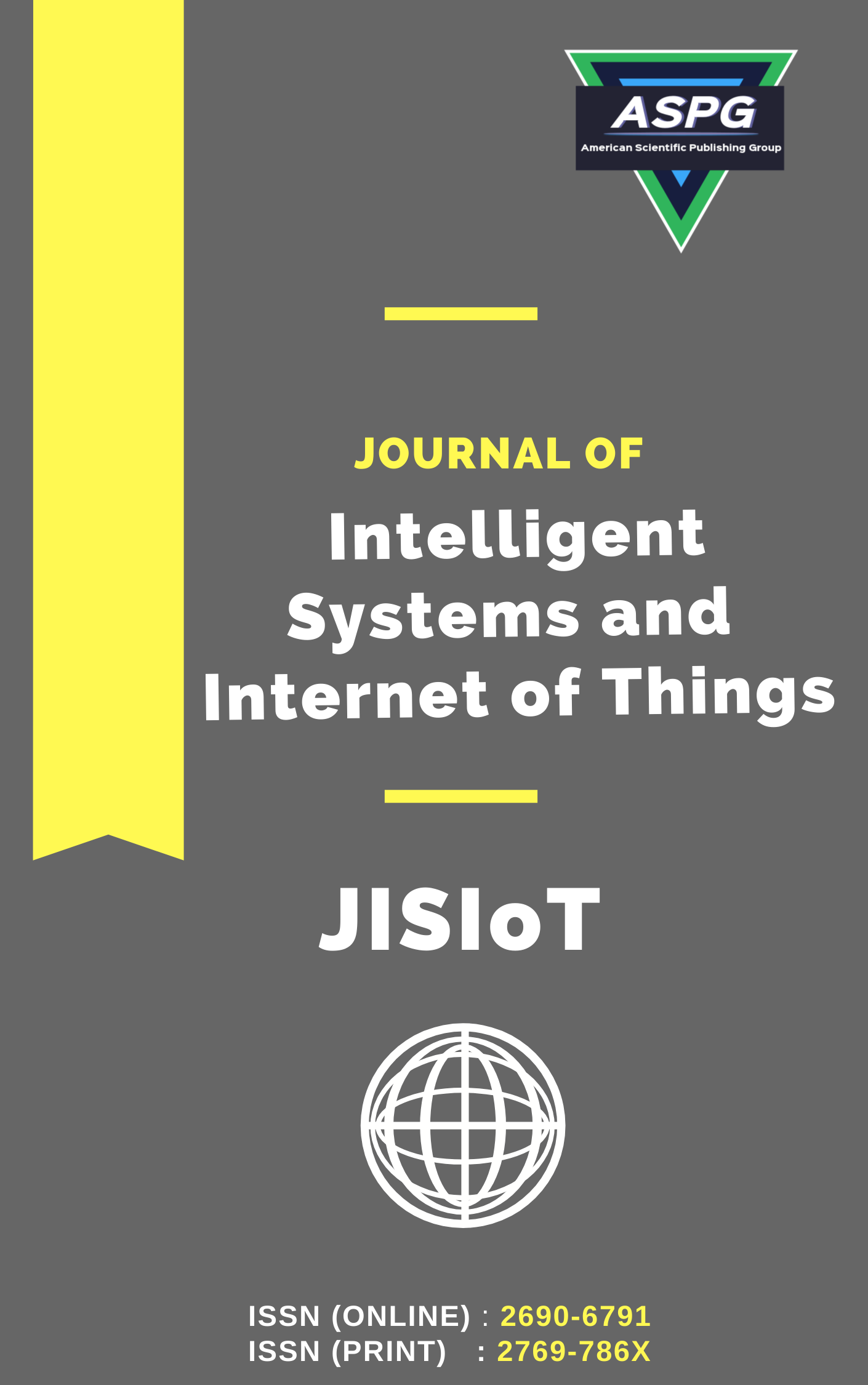

Volume 15 , Issue 2 , PP: 01-13, 2025 | Cite this article as | XML | Html | PDF | Full Length Article
Ehab Bahaudien Ashary 1 *
Doi: https://doi.org/10.54216/JISIoT.150201
Intrusion Detection Systems (IDS) are increasingly being integrated into smart homes for effective pervasive sensing and resource management, thanks to advancements in sensor technologies and the development of Information and Communication Technology (ICT). Securing IDSs in smart homes is significant for safeguarding crucial data and ensure the integrity of related devices. Implementing strong cybersecurity, measures, including regular software updates, encrypted communication protocols, and secure authentication mechanisms, is critical to safeguard potential risks. As the smart home network constantly increasing, developers, users, and manufacturers must work together to maintain and prioritize stringent security standards, alleviating the risks closely related to connected devices and preserving the safety and privacy of the consumer. Blockchain (BC) technology can increase the security of IDS in smart homes by giving a tamper-resistant and decentralized framework to manage data transactions and device interactions. By leveraging blockchain, smart home networks can establish a more secure and resilient infrastructure, which provides consumers with high confidence in the security and privacy of the interconnected devices. This study introduces a Blockchain and Multi-Head Attention-Based Deep Learning for Intrusion Detection System in Smart Networks (BCMHDL-IDSSN) technique in Smart Home Networks. The BCMHDL-IDSSN method aims to enhance security in the smart home networks. In the BCMHDL-IDSSN technique, BC technology is used to achieve security. Besides, the BCMHDL-IDSSN technique involves the design of a multi-head attention bidirectional gated recurrent unit (MHA-BiGRU) method for the detection of malicious activities. Finally, an enhanced pigeon-inspired optimization (EPIO) model is applied for the optimal hyperactive parameter choice of the MHA-BiGRU model. A detailed investigation was applied to validate the performance of the BCMHDL-IDSSN method. The simulation values emphasized that the BCMHDL-IDSSN method gains high efficiency over other techniques.
Blockchain , Bidirectional Gated Recurrent Unit , Consumer Electronic Devices , Smart Home , Pigeon Inspired Optimization
[1] R. Kairaldeen, N. F. Abdullah, A. Abu-Samah, and R. Nordin, “Data integrity time optimization of a blockchain IoT smart home network using different consensus and hash algorithms,” Wireless Communications and Mobile Computing, vol. 2021, pp. 1–23, Nov. 2021.
[2] H. Abdulqadder, D. Zou, and I. T. Aziz, “The DAG blockchain: A secure edge assisted honeypot for attack detection and multi-controller based load balancing in SDN 5G,” Future Generation Computer Systems, vol. 141, pp. 339–354, Apr. 2023.
[3] T. M. Ghazal, M. K. Hasan, S. N. H. S. Abdullah, K. A. A. Bakar, and H. Al Hamadi, “Private blockchain-based encryption framework using computational intelligence approach,” Egyptian Informatics Journal, vol. 23, no. 4, pp. 69–75, Dec. 2022.
[4] S. F. Khan, S. S. Priya, M. Soni, I. Keshta, and I. R. Khan, A Blockchain-Based AI Approach Towards Smart Home Organization Security, CRC Press, 2024, pp. 589–596.
[5] L. Almuqren et al., “Blockchain-assisted secure smart home network using gradient-based optimizer with hybrid deep learning model,” IEEE Access, 2023.
[6] Y. Ren et al., “Multiple cloud storage mechanism based on blockchain in smart homes,” Future Generation Computer Systems, vol. 115, pp. 304–313, Feb. 2021.
[7] R. Kumar et al., “A distributed intrusion detection system to detect DDoS attacks in blockchain-enabled IoT network,” Journal of Parallel and Distributed Computing, vol. 164, pp. 55–68, Jun. 2022.
[8] M. Baza et al., “Privacy-preserving blockchain-assisted private-parking scheme with efficient matching,” Computers and Electrical Engineering, vol. 103, Oct. 2022, Art. no. 108340.
[9] W. Meng et al., “Towards blockchain-enabled single character frequency-based exclusive signature matching in IoT-assisted smart cities,” Journal of Parallel and Distributed Computing, vol. 144, pp. 268–277, Oct. 2020.
[10] N. Butt et al., “Intelligent deep learning for anomaly-based intrusion detection in IoT smart home networks,” Mathematics, vol. 10, no. 23, p. 4598, Dec. 2022.
[11] A. Qashlan, P. Nanda, and M. Mohanty, “Differential privacy model for blockchain-based smart home architecture,” Future Generation Computer Systems, vol. 150, pp. 49–63, 2024.
[12] M. M. Khayyat, S. Abdel-Khalek, and R. F. Mansour, “Blockchain-enabled optimal Hopfield chaotic neural network-based secure encryption technique for industrial Internet of Things environment,” Alexandria Engineering Journal, vol. 61, no. 12, pp. 11377–11389, 2022.
[13] R. Kumar et al., “Blockchain-based authentication and explainable AI for securing consumer IoT applications,” IEEE Transactions on Consumer Electronics, 2023.
[14] E. Rabieinejad, A. Yazdinejad, A. Dehghantanha, and G. Srivastava, “Two-level privacy-preserving framework: Federated learning for attack detection in the consumer Internet of Things,” IEEE Transactions on Consumer Electronics, 2024.
[15] A. Kumar et al., “A secure architectural model using blockchain and estimated trust mechanism in electronic consumers,” IEEE Transactions on Consumer Electronics, 2023.
[16] A. Sheeba et al., “Secure smart city application using webservice model and Mayfly optimization‐based lightweight CNN,” Transactions on Emerging Telecommunications Technologies, vol. 35, no. 1, p. e4869, 2024.
[17] S. Singh et al., “A framework for privacy-preservation of IoT healthcare data using federated learning and blockchain technology,” Future Generation Computer Systems, vol. 129, pp. 380–388, 2022.
[18] H. Xie et al., “Verifiable federated learning with privacy-preserving data aggregation for consumer electronics,” IEEE Transactions on Consumer Electronics, 2023.
[19] S. Menon et al., “Blockchain and machine learning-inspired secure smart home communication network,” Sensors, vol. 23, no. 13, p. 6132, 2023.
[20] J. Zhang et al., “Feature fusion text classification model combining CNN and BiGRU with the multi-attention mechanism,” Future Internet, vol. 11, no. 11, p. 237, 2019.
[21] Y. Liu et al., “Chinese event subject extraction in the financial field integrated with BiGRU and multi-head attention,” in Journal of Physics: Conference Series, vol. 1828, no. 1, p. 012032, Feb. 2021.
[22] M. Liu et al., “Fault recovery of distribution network with distributed generation based on pigeon-inspired optimization algorithm,” Electronics, vol. 13, no. 5, p. 886, 2024.
[23] Kaggle Dataset, “NSL-KDD dataset,” available at: https://www.kaggle.com/datasets/hassan06/nslkdd.
[24] F. F. Alruwaili et al., “A decentralized approach to smart home security: Blockchain with red-tailed hawk-enabled deep learning,” IEEE Access, 2024.